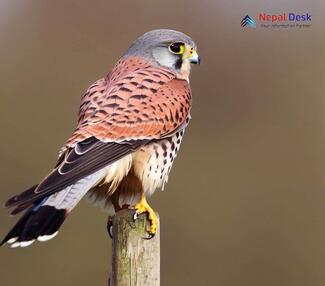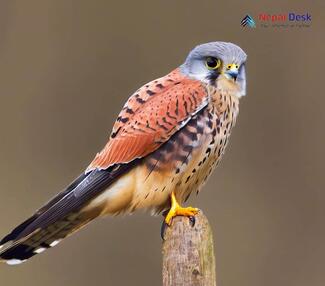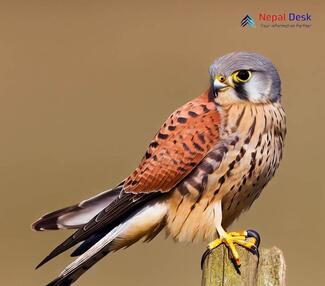Nepal, a country renowned for its diverse flora and fauna, is home to many remarkable bird species – one of which is the Common Kestrel. It is scientifically known as Falco tinnunculus and belongs to the kestrel group within the falcon family, Falconidae. This bird of prey is often referred to as the European kestrel, Eurasian kestrel, or Old World kestrel. In the UK, where it's the only commonly seen kestrel species, people usually just call it "kestrel". This captivating bird of prey is admired by both nature enthusiasts and ornithologists alike. In this article, we will delve into the fascinating world of the Common Kestrel found in Nepal, exploring their habitat, behavior, diet, and more.
Habitat: Where the Common Kestrel Thrives
In Nepal, the Common Kestrel can be found across various landscapes, including forests, grasslands, mountainous areas, and even urban environments. They are known to thrive at elevations of up to 3,000 meters above sea level. These adaptable birds favor open spaces with abundant prey and suitable nesting sites, making it possible for them to reside in a wide range of habitats.
Behavior: Master Hunters in Action
As skilled hunters, Common Kestrels possess exceptional vision and precise aerial maneuverability. They mainly rely on sight when pursuing prey and often hover above their target before dive-bombing to seize it. Their ability to hover makes them easily recognizable even from a distance. These raptors are also known for their territorial behavior during the breeding season; males aggressively defend their territory from intruders using aerial combat displays.
Diet: A Varied Menu for the Common Kestrel
The primary diet of the Common Kestrel found in Nepal comprises small mammals such as mice and voles. However, they have been known to consume other prey items as well – including small birds, reptiles like lizards, and insects like beetles and grasshoppers. The adaptability of these birds allows them to exploit various food sources depending on availability.
Breeding and Nesting Habits
Nesting season for the Common Kestrel in Nepal typically begins in April and lasts until July. They often reuse old nests built by other bird species in trees or on cliffs. They can also be found nesting in man-made structures like buildings and bridges. Kestrels usually lay between 3-6 eggs, which both the male and female share responsibility for incubating.
Conservation Efforts: Protecting the Common Kestrel
While the Common Kestrel is considered to be of least concern according to the IUCN Red List of Threatened Species, habitat loss and decreasing prey availability due to human activities are potential threats to their population. Conservation efforts focusing on preserving their natural habitats, together with spreading awareness about responsible tourism, will help ensure these majestic raptors continue to soar through Nepal's skies for generations to come.
In conclusion, the Common Kestrel found in Nepal offers nature lovers a unique opportunity to observe and appreciate one of the world's most fascinating bird species. Their adaptability in different environments, impressive hunting skills, and striking appearance make them an unforgettable sight to behold. So on your next visit to Nepal, don't miss the chance to marvel at these awe-inspiring birds as they grace the skies above this beautiful country.




